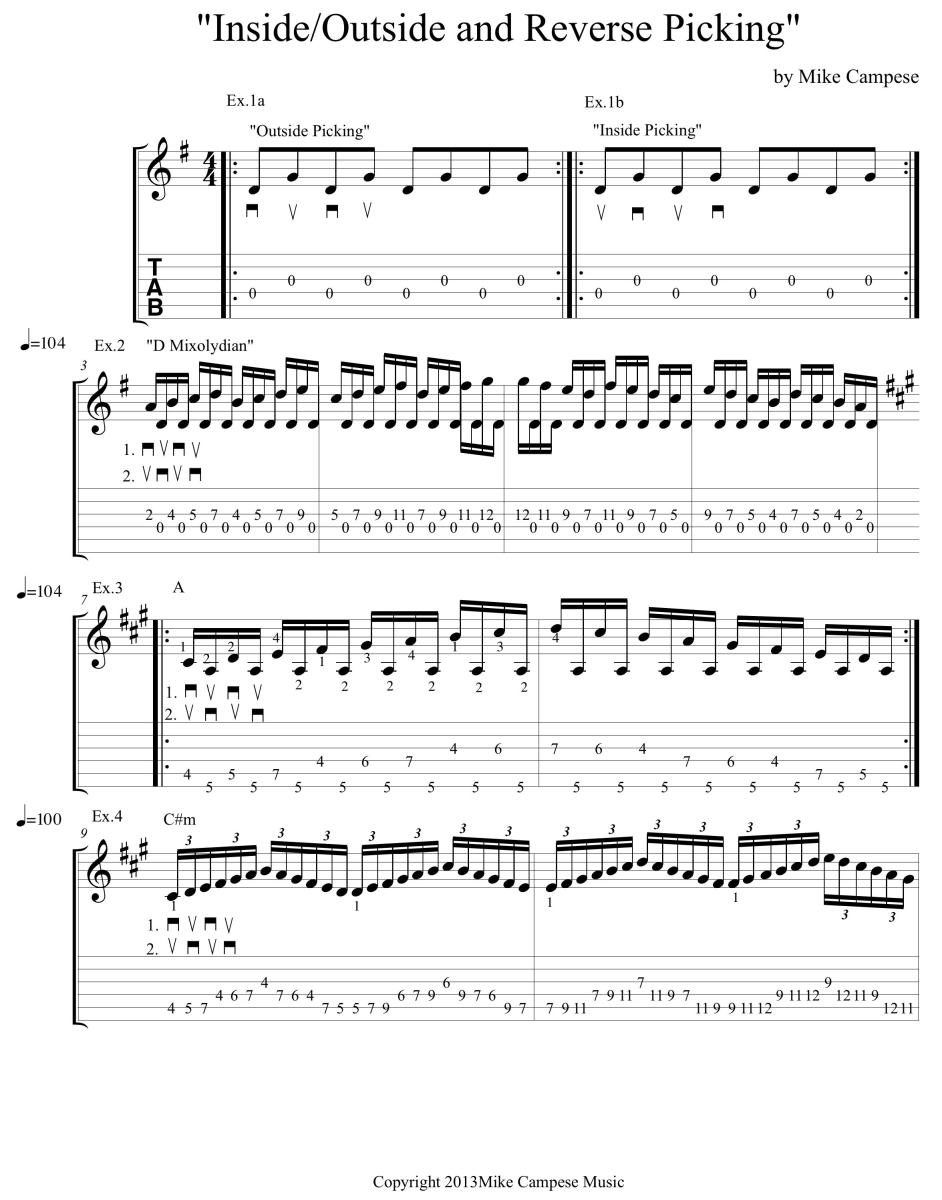Welcome back! Do you ever wonder why you can't alternate pick certain passages? In this lesson I will be showing you a technique that will really help you develop your right hand picking. While I was attending Paul Gilbert's classes back in the day, I would always hear him talking about inside and outside picking. At the time I wasn't sure what he meant and it was not until a little while after I figured out what he was talking about.
If you are picking between two adjacent strings like the D and the G string and you pick the D with a downstroke and pick the G on a upstroke, this is called outside picking. If you are picking the D string with a upstroke and the G string with a downstroke, this is called inside picking. If you look at Examples 1a and 1b you will see the difference and you will notice the pick direction symbols underneath are different from one another. It is quite simple, when you are outside picking you are picking outside of the 2 strings and when you are inside picking you are picking inside of the 2 strings. It is easier picking on just one string, but the problems arise when picking between 2 strings. Let me show you a few exercises that will help you develop this.
Example 2 is played only on the D and G strings using the D mixolydian mode (D, E, F#, G, A, B, C) and it is moving up the neck in a 4 note sequence. When you play this the first time, start with a downstroke and then the second time start with an upstroke. You will notice it will feel different switching back and forth between the two picking patterns, inside picking is usually harder for most people. Be sure to play this up and down the full range of the fretboard and on the other strings as well.
MP3 - Inside/Outside and Reverse Picking, Example 2
Example 3 is a lot harder than the previous example, because it uses some string skips with some pretty wide intervals within the A major scale (A, B, C#, D, E, F#, G#). Like the previous example, start playing it with a down stroke the first time, and the second time start with an upstroke. Make sure you start very slow and make sure both hands are totally locked before playing it fast.
MP3 - Inside/Outside and Reverse Picking, Example 3
In the previous examples we just used 2 strings. In Example 4 we will take a 3 string, 16th note triplet pattern in the C# phrygian mode and we will play it with reverse picking. Reverse picking is basically the same idea as inside and outside picking, it just puts all the upstrokes on the downbeats. You will want to play it both ways, as starting with the upstroke may feel a bit awkward.
MP3 - Inside/Outside and Reverse Picking, Example 4
Example 5 is a great picking exercise that will help strengthen your right hand and make the up strokes stronger. This is a 9 note pattern played with 16th note triplets. Move this all the way up the neck and back and be sure to use different finger permutations. Also, start this pattern on an upstroke as well.
Example 6 is the same 9 note pattern as the previous example, but it is applied to a 3 note per string G major scale (G, A, B, C, D, E, F#). Apply this pattern to all the other scales and modes in all keys.

OK, that is it for now! Make sure to you make up your own examples and don't forget to visit mikecampese.com.
Mike Campese is an all-around music performer, session artist and teacher competent in many musical styles, electric and acoustic. He has studied at G.I.T. (Honors Graduate), and with Paul Gilbert, Norman Brown, Stanley Jordan, Scott Henderson and Keith Wyatt.